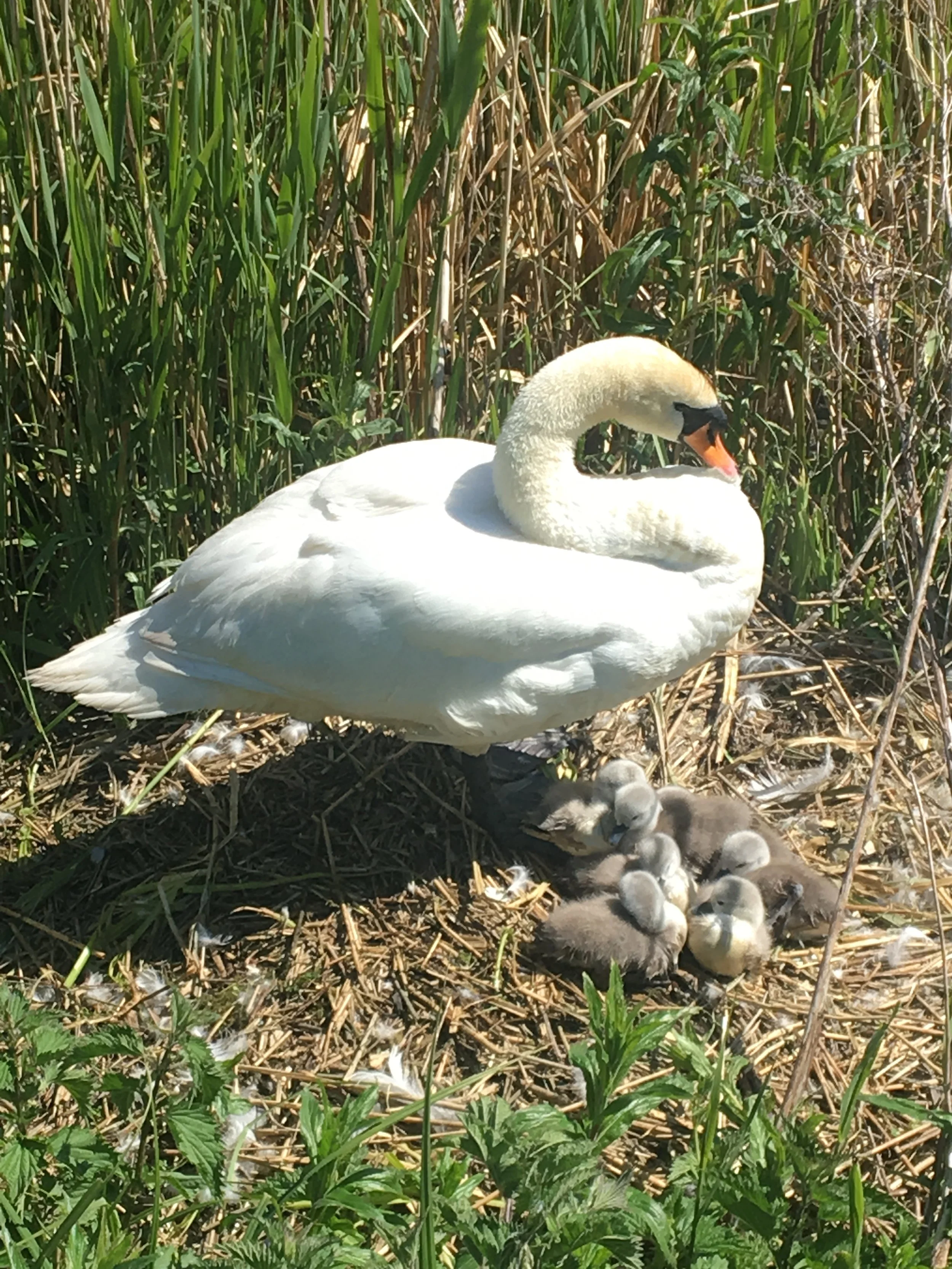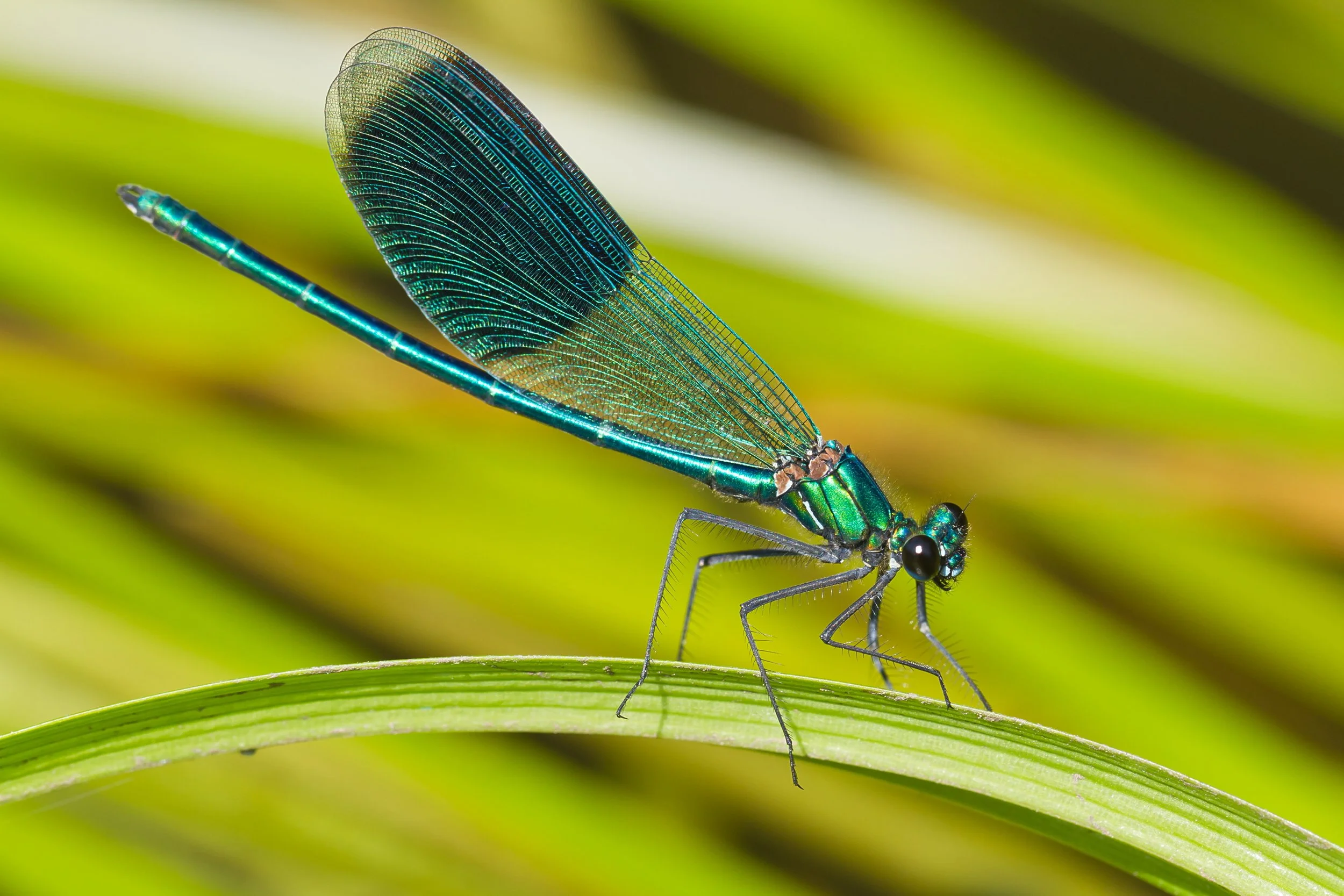Around the yard you will see:
Mummy swan and her cygnets
Our “pet” swans.
They nest with us every year and we feed them all year round. We do sell bags of food if you want to feed them. In the spring you will see their cygnets, as they love nesting in the boatyard. Don’t go too close as they are very protective parents . The swan has the ability to swim and fly with incredible speed and agility. The swan is also very intelligent, devoted to its mate, they are said to mate once and for life. Swan symbolise a lot of beautiful traits – grace, beauty, love, loyalty, and trust. They teach you to love your inner self, embrace all your flaws, and be loyal and faithful to the ones you love.
Barn Owl in flight
The Barn Owl
At dawn and dusk, a barn owl flies across the marshes behind Coot Club and Swallows. We think you are most likely to have a day time spot in nesting season (March to August), as their young want feeding all day. The Barn Owl has excellent low-light vision, and can easily find prey at night by sight. Its ability to locate prey by sound alone is the best of any animal that has ever been tested.
Out on the river keep an eye out for:
Otters snack time
Otters.
A very cute river dweller who can be spotted throughout the Waveney river. Lookout for a long line of air bubbles as that can mean an otter is swimming under the water. We have a family who pop into the yard, and they particularly like playing from the corner of the basin past Coot Club, up to Swallows and then over to the wet-shed.
Kingfisher at Hippersons
Kingfishers
They dwell along the Waveney, and particularly along the stretch towards Geldeston. They move very quickly and are shy birds, with their nest in small burrows along the river bank. They hunt in the mornings, as they wake up hungry, and in the nesting season ( March to July) they are hunting all day to feed their young. Thy can skim the surface of the river, and a spot when out on a canoe flying in from of you is a memorable experience. Our electric day boats allow you to get close as they make less noise and the kingfisher wont hear you coming. Sometimes you can follow a Kingfisher flying down to Geldeston.
Dragonfly
Dragonflies
Chosen as the symbol of the Broads National Park, and whilst visiting us, hopefully you will see why. Throughout the months of April till August a variety of different dragonfly breed and live on the Broads. Their expected lifecycle is 7-56 days, and they come in all colours of the rainbow. They often skim on the water as it helps them to keep their body temperature correct. More information can be found here https://www.visitthebroads.co.uk/__data/assets/pdf_file/0020/310907/dragonflies_damselflies.pdf.
Marsh Harrier hunting
Marsh Harriers
They appear all over the Broads National park. When in our boatyard if you look behind Secret Garden, you will often see them circling above the marsh there. The Marsh harriers are a bird of prey of the Harrier sub family. It is the largest harrier and can be recognised, by its long tail and light flight with wings held in a shallow V. The female Harriers can be identified as they have creamy coloured heads and are larger than the male.





